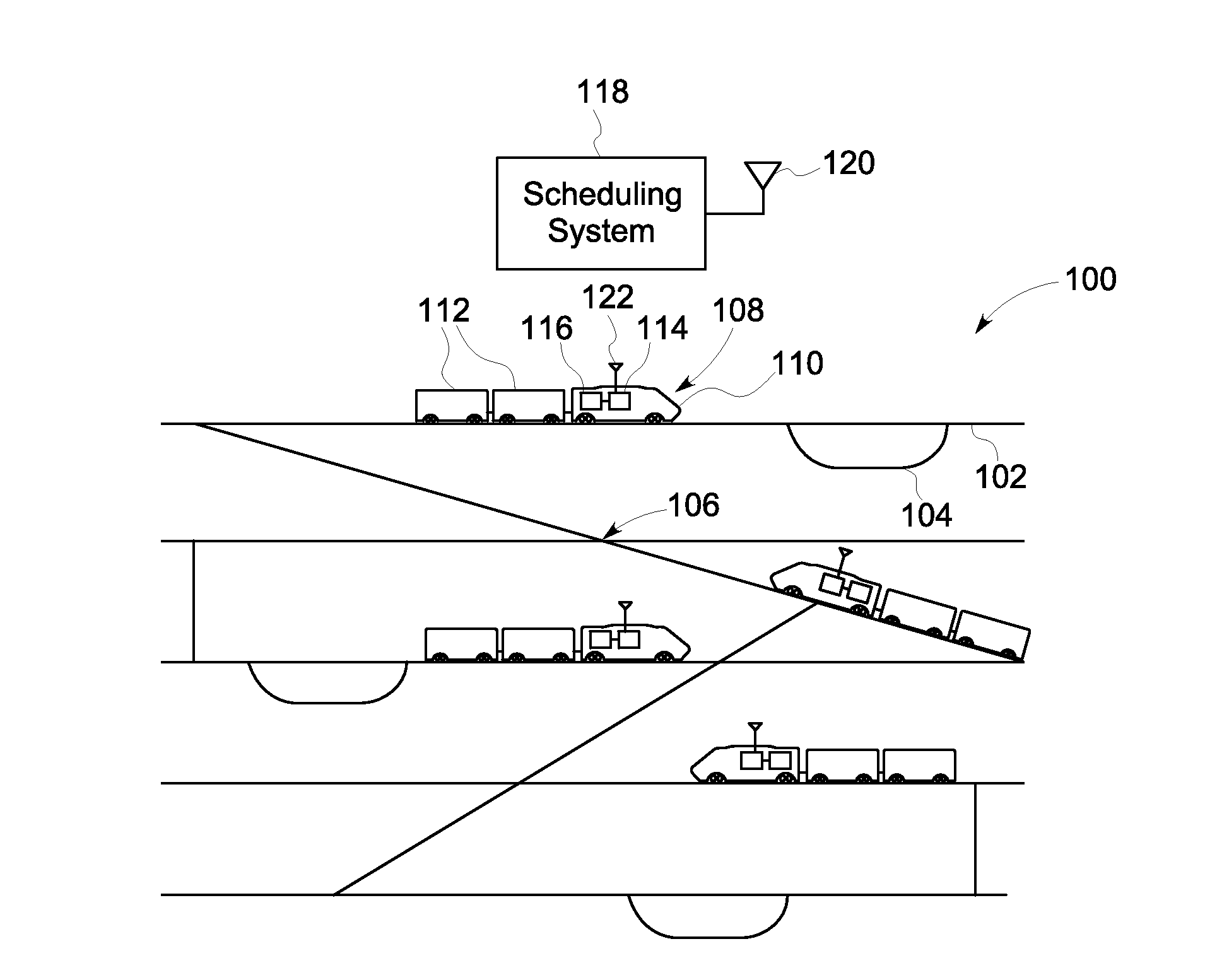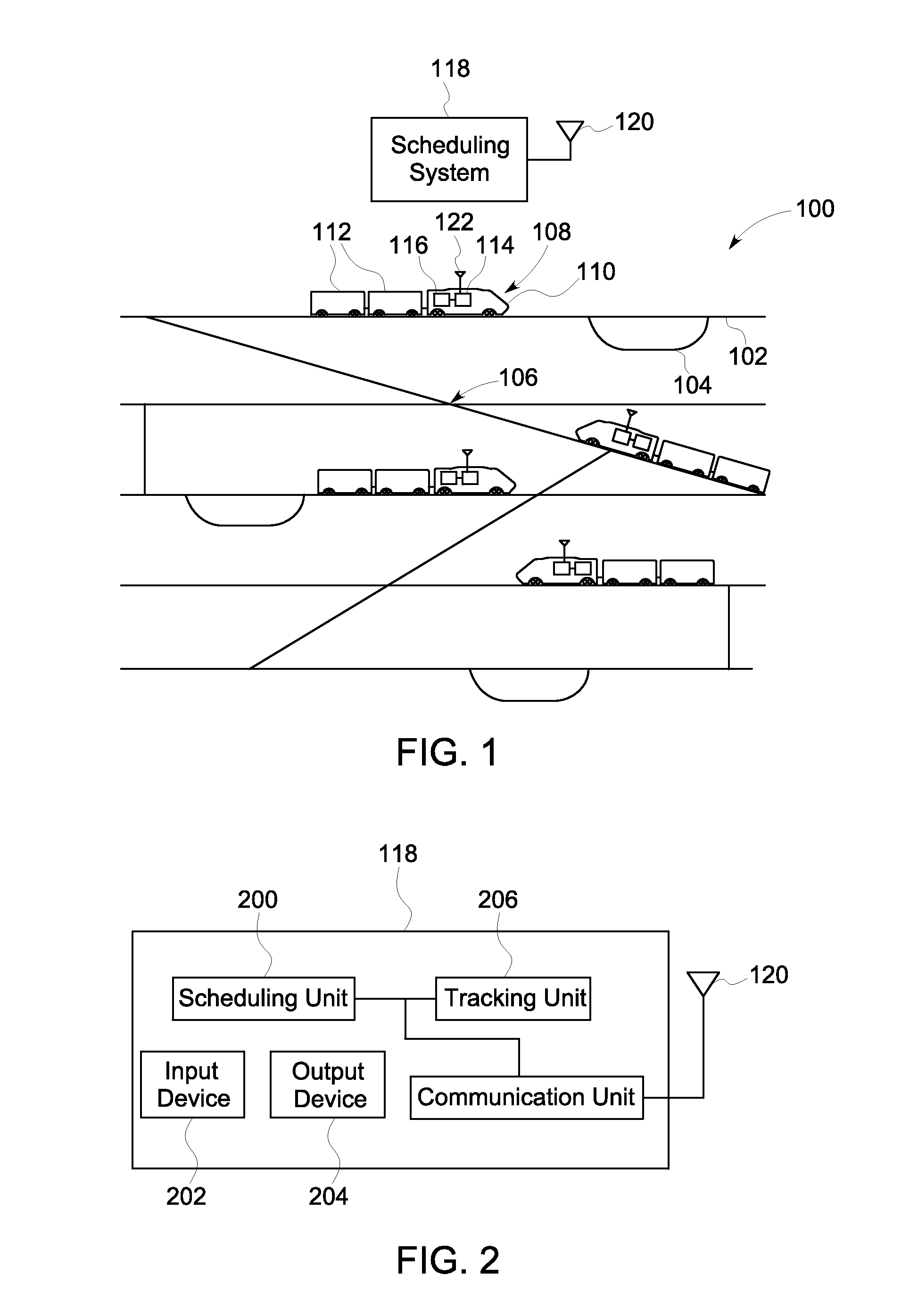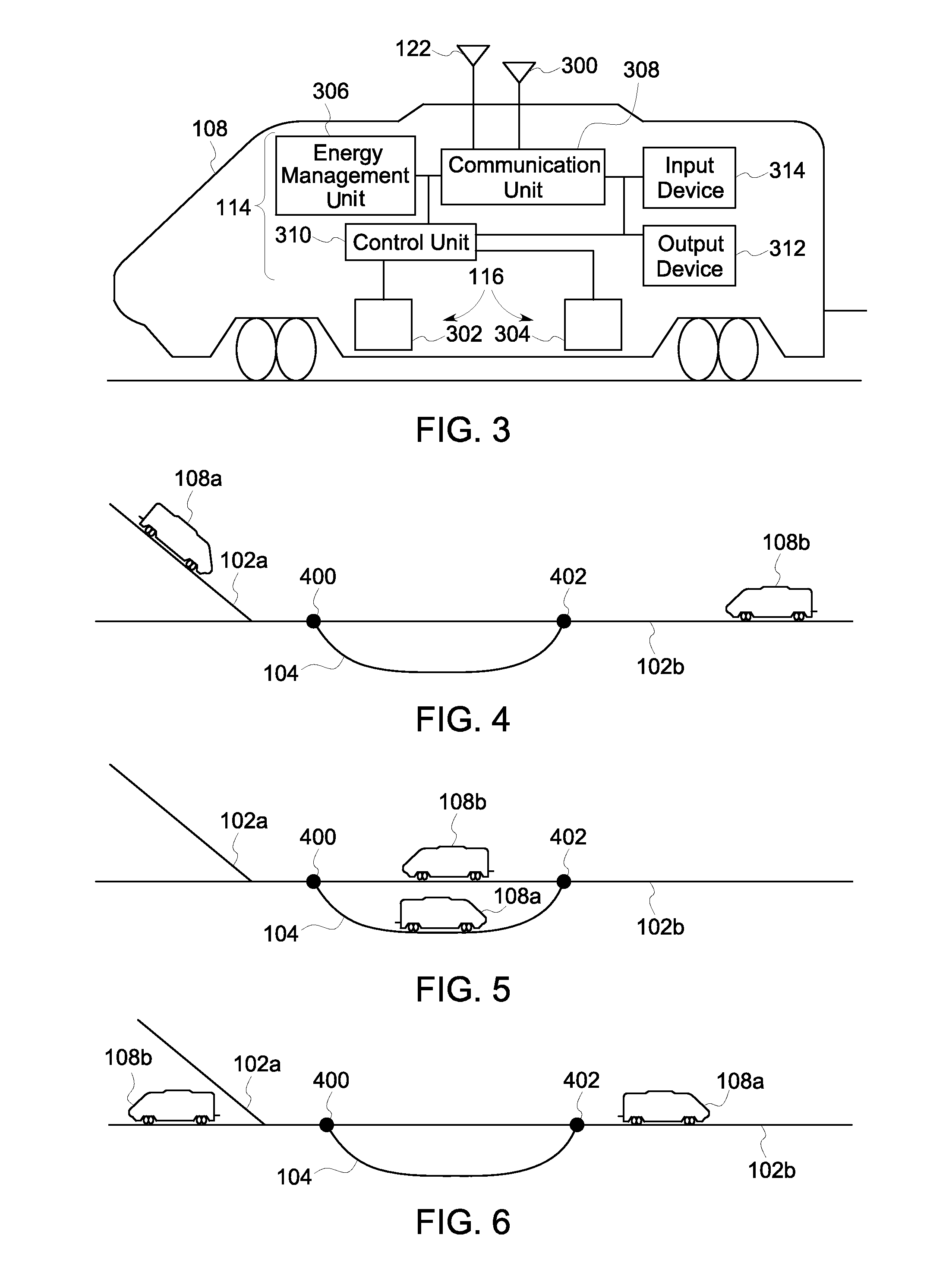Transportation Network Scheduling System And Method
a transportation network and scheduling system technology, applied in the direction of vehicle position/course/altitude control, process and machine control, instruments, etc., can solve the problems of slow travel of one or more vehicles and interfere with the movement of other vehicles, so as to increase the amount of fuel consumed
- Summary
- Abstract
- Description
- Claims
- Application Information
AI Technical Summary
Benefits of technology
Problems solved by technology
Method used
Image
Examples
Embodiment Construction
[0048]One or more embodiments of the inventive subject matter described herein provide systems for generating schedules for vehicles to concurrently travel within a transportation network and energy management systems of the vehicles that create trip plans based on the schedules. The transportation network can be formed of plural interconnected routes, such as railroad tracks, roads, paths in water (e.g., marine shipping pathways), paths in air and / or space (e.g., airline routes), and the like. The vehicles may include powered units capable of self-propulsion, such as automobiles, airplanes, or marine vessels, locomotives, or other off-highway vehicles. The schedules may direct the vehicles to travel along the routes to destination locations at associated arrival times. Additionally or alternatively, the schedules may include one or more waypoints on the way to the destination locations and associated times that the vehicles are to travel to or past the waypoints.
[0049]The energy ma...
PUM
 Login to View More
Login to View More Abstract
Description
Claims
Application Information
 Login to View More
Login to View More - R&D
- Intellectual Property
- Life Sciences
- Materials
- Tech Scout
- Unparalleled Data Quality
- Higher Quality Content
- 60% Fewer Hallucinations
Browse by: Latest US Patents, China's latest patents, Technical Efficacy Thesaurus, Application Domain, Technology Topic, Popular Technical Reports.
© 2025 PatSnap. All rights reserved.Legal|Privacy policy|Modern Slavery Act Transparency Statement|Sitemap|About US| Contact US: help@patsnap.com



